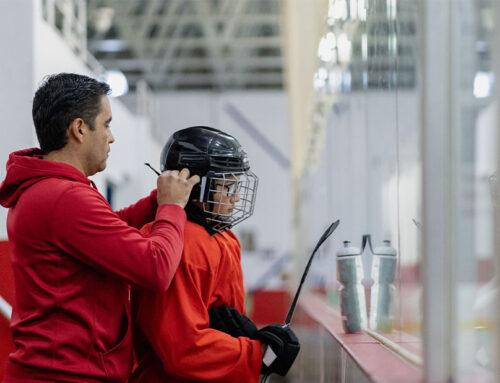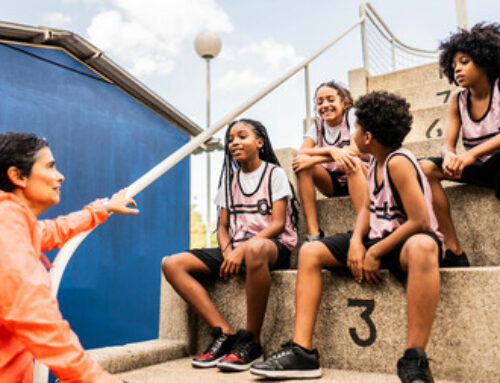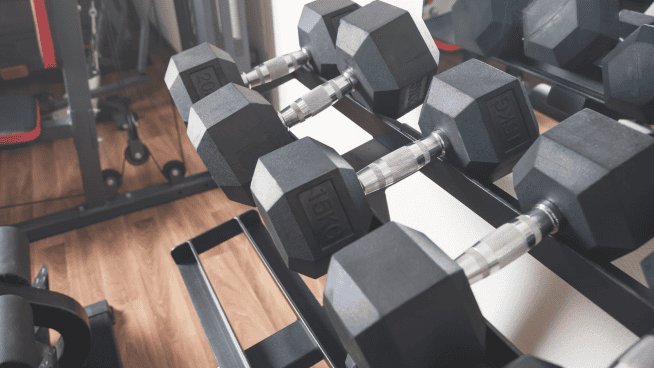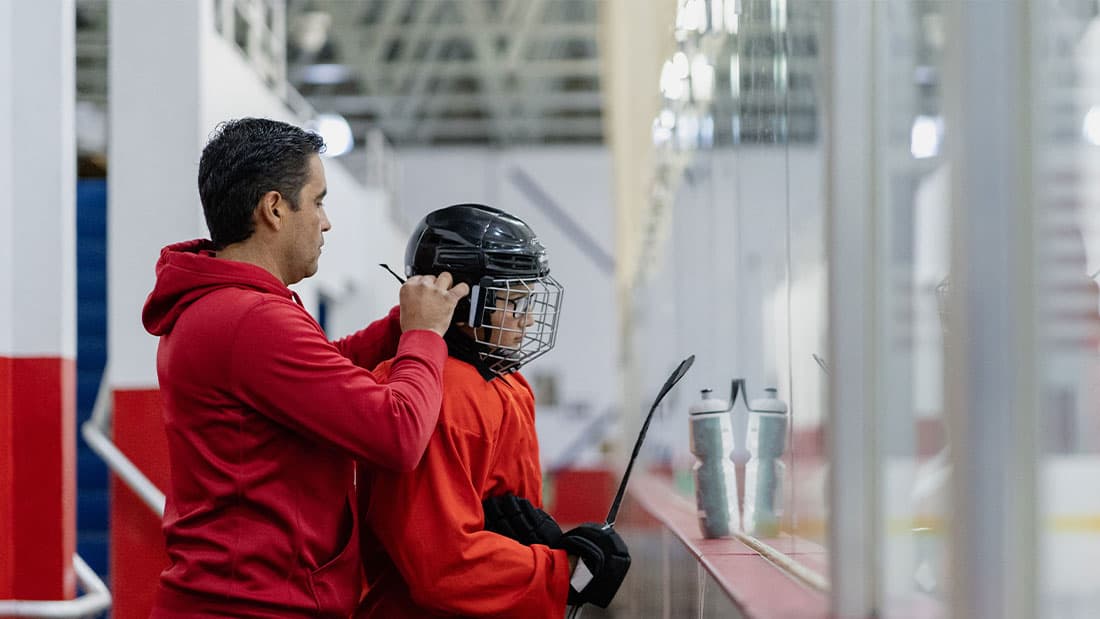7 Youth Basketball Practice Essentials
What youth basketball coaches need on day one — and every practice after that
The genius of basketball is how little equipment you actually need: one ball, one hoop and a half-court size space and you’re more or less good to go. But a youth basketball coach can always have a few more things in his or her back of tricks to make practice fun, easy and effective.
MOJO asked Danielle Viglione, owner and trainer at Sacramento Skills Academy in California, what her must-haves are when developing basketball players in 8th grade and under. Assuming the basketball league or program provides the playing area, a coach’s practice essentials are as follows.
The right size ball
Basketball size matters, it’s true. One appropriately-sized ball for every kid at practice is the ideal, says Viglione. That helps every player to be as active as possible throughout practice.
The right size hoop
Hoop height matters as well. If your players aren’t ready for a 10-foot hoop yet, use a portable one.
Pinnies
Young, developing players aren’t always ready for 5 on 5 game-play, says Viglione, but a generous supply of different-colored pinnies helps them develop the offensive and defensive skills, and spirit of teamwork, that will get them there.
While pinnies aren’t necessary for most individual skill-building games, they’re essential for games where players switch from offense to defense and back again. Who do you pass to again? That other kid wearing red.
Cones
Cones aren’t necessarily required equipment, but they really help — especially at younger ages, when kids are still learning the court lines. Coaches can also use cones to mark shooting lines that are more appropriate for a kid’s skill level, or to create smaller playing areas within a full-size court. (For older kids, Viglione typically uses bodies, not cones, to help simulate defense.)
Another smart option, says Viglione, are small rubber circles — a.k.a. flat field cones — that can be placed directly on the floor. “I use them to say, Here is your spacing,” she says. With circles, she says, you can run and step on them and not get injured.
Your smartphone
It’s a stopwatch! It’s instant replay! It’s better than a whiteboard!
Yes, it’s your smartphone.
“I use my phone for everything,” says Viglione. Most notably, the stopwatch. “You can make anything competitive with number or time.”
But the phone helps for teaching, too.
“Visual learning is one of the best things for kids,” says Viglione. “If you’re showing a skill, a whiteboard is not going to show them what to do.” But Viglione can use her phone to show players a skill via video — like a pick and roll, or a layup. She also uses her phone to show players what she sees as they practice a skill. “It’s really effective for the kid to see themselves. I can show them what to do for 2 minutes, but they can’t feel it. Once they see themselves do it, they can feel it.”
Your voice
A whistle is often a visual shorthand for a youth coach, but it doesn’t have to be.
“I don’t use whistles with younger kids,” says Viglione. “I’d rather be talking and ready to comment than have a whistle. If you have 10 kids or so, they can hear you.”
For larger groups, or in gyms or on outdoor courts where it’s truly hard to hear, a whistle can help get a team’s attention, fast. (That’s why whistles are used by refs in a game.) But the most powerful motivator is still a coach’s voice and words.
Room for failure
When kids compete, someone loses — which is why Viglione is so passionate about making room for failure, and giving kids strategies for the next opportunity.
The trick, she says, is to stay positive.
“I always give them leeway,” she says. “I say, Let’s beat our record. Let’s make a rule where we can’t miss two in a row. It’s about allowing them to make mistakes, so they feel comfortable messing up,” says Viglione. “Because that’s when they get better.”
Read the original article on mojo.com
About MOJO
MOJO is on a mission to make youth sports more fun for everyone — one kid, one coach, one family at a time. Launched in February 2021, MOJO is a robust digital platform that empowers parents who coach youth sports to bring world-class training to the largest pool of players in the world — kids aged 13 and under. MOJO believes that youth sports has the power to transform lives, not just for the kids on the field but the coaches and parents on the sidelines. MOJO is committed to equity, inclusion and helping level the playing field for kids everywhere. For more information, visit www.mojo.sport. MOJO can also be found on Facebook, Twitter, and Instagram.
RECOMMENDED FOR YOU
MOST POPULAR
7 Youth Basketball Practice Essentials
What youth basketball coaches need on day one — and every practice after that
The genius of basketball is how little equipment you actually need: one ball, one hoop and a half-court size space and you’re more or less good to go. But a youth basketball coach can always have a few more things in his or her back of tricks to make practice fun, easy and effective.
MOJO asked Danielle Viglione, owner and trainer at Sacramento Skills Academy in California, what her must-haves are when developing basketball players in 8th grade and under. Assuming the basketball league or program provides the playing area, a coach’s practice essentials are as follows.
The right size ball
Basketball size matters, it’s true. One appropriately-sized ball for every kid at practice is the ideal, says Viglione. That helps every player to be as active as possible throughout practice.
The right size hoop
Hoop height matters as well. If your players aren’t ready for a 10-foot hoop yet, use a portable one.
Pinnies
Young, developing players aren’t always ready for 5 on 5 game-play, says Viglione, but a generous supply of different-colored pinnies helps them develop the offensive and defensive skills, and spirit of teamwork, that will get them there.
While pinnies aren’t necessary for most individual skill-building games, they’re essential for games where players switch from offense to defense and back again. Who do you pass to again? That other kid wearing red.
Cones
Cones aren’t necessarily required equipment, but they really help — especially at younger ages, when kids are still learning the court lines. Coaches can also use cones to mark shooting lines that are more appropriate for a kid’s skill level, or to create smaller playing areas within a full-size court. (For older kids, Viglione typically uses bodies, not cones, to help simulate defense.)
Another smart option, says Viglione, are small rubber circles — a.k.a. flat field cones — that can be placed directly on the floor. “I use them to say, Here is your spacing,” she says. With circles, she says, you can run and step on them and not get injured.
Your smartphone
It’s a stopwatch! It’s instant replay! It’s better than a whiteboard!
Yes, it’s your smartphone.
“I use my phone for everything,” says Viglione. Most notably, the stopwatch. “You can make anything competitive with number or time.”
But the phone helps for teaching, too.
“Visual learning is one of the best things for kids,” says Viglione. “If you’re showing a skill, a whiteboard is not going to show them what to do.” But Viglione can use her phone to show players a skill via video — like a pick and roll, or a layup. She also uses her phone to show players what she sees as they practice a skill. “It’s really effective for the kid to see themselves. I can show them what to do for 2 minutes, but they can’t feel it. Once they see themselves do it, they can feel it.”
Your voice
A whistle is often a visual shorthand for a youth coach, but it doesn’t have to be.
“I don’t use whistles with younger kids,” says Viglione. “I’d rather be talking and ready to comment than have a whistle. If you have 10 kids or so, they can hear you.”
For larger groups, or in gyms or on outdoor courts where it’s truly hard to hear, a whistle can help get a team’s attention, fast. (That’s why whistles are used by refs in a game.) But the most powerful motivator is still a coach’s voice and words.
Room for failure
When kids compete, someone loses — which is why Viglione is so passionate about making room for failure, and giving kids strategies for the next opportunity.
The trick, she says, is to stay positive.
“I always give them leeway,” she says. “I say, Let’s beat our record. Let’s make a rule where we can’t miss two in a row. It’s about allowing them to make mistakes, so they feel comfortable messing up,” says Viglione. “Because that’s when they get better.”
Read the original article on mojo.com
About MOJO
MOJO is on a mission to make youth sports more fun for everyone — one kid, one coach, one family at a time. Launched in February 2021, MOJO is a robust digital platform that empowers parents who coach youth sports to bring world-class training to the largest pool of players in the world — kids aged 13 and under. MOJO believes that youth sports has the power to transform lives, not just for the kids on the field but the coaches and parents on the sidelines. MOJO is committed to equity, inclusion and helping level the playing field for kids everywhere. For more information, visit www.mojo.sport. MOJO can also be found on Facebook, Twitter, and Instagram.











